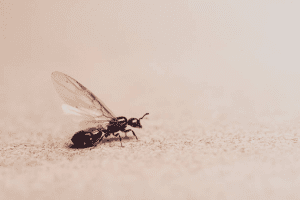
Feeding insects to animals is not a new concept. It is also not an uncommon concept in the sense that there are cultures in South America, Mexico, and some Asian countries that have been feeding insects to their chickens and other animals for centuries.
However, the idea of feeding insects to animals is just now gaining traction popularly as they are an organic and sustainable option. This article illustrates how traditionally fly larvae have been used in chicken feed, the benefits of fly larvae for chickens, and how you can incorporate this for your farm-reared chickens.
Fly Larvae for Chicken
If you’ve ever seen a chicken eat, you’ve probably noticed they don’t do much chewing. Chickens, as well as other types of poultry, can feed on a wide variety of food, including grains, meat, insects, fish, and plants.
However, when they are fed a steady diet of high-protein grains, the gizzard can become overloaded and stop working properly. This is when chicken farmers turn to the larvae of the black soldier fly, a type of fly that can consume almost any organic material.
What is Fly Larvae?
Fly larvae are the larvae of any of the various dipteran insects of the order Diptera (true flies). Examples include those of the families Muscidae, Calliphoridae, Fanniidae, Sarcophagidae, and others.
Fly larvae are found in all types of rotting organic matter, including manure. Originally, the larvae feed on the microorganisms in manure. Fly larvae are the most widely used animal by-product in the world. They are usually freeze-dried, ground into powder, and added to poultry feeds.
The most common species are houseflies (Musca domestica) and black blow (Phormia Regina). They are commercially produced in two ways.
The first one is by collecting manure from the concentrated livestock operations (commercial poultry and swine operations) and the second one is by collecting manure from homes, restaurants, and grocery stores. They are eaten by animals such as chickens, fish, and turtles.
Benefits of Fly Larvae for Chicken
Fly larvae are commonly used as feed for chickens, but have you ever wondered why? Here is a quick overview of the fly larva as feed for chickens and why it is such a good idea. Fly larvae are the larvae stage of house flies and blowflies. Although they are the larvae of flies, they are made up of the same nutrients that birds need to grow.
Fly larvae may not sound like a tasty snack, but farmers have learned that feeding chicken feed spiked with larva extract is a good way to boost egg production.
Researchers at the Faculty of Agriculture at Chiang Mai University in Thailand looked at the effect of feeding chicken feed with or without 4.5 percent ground larvae on egg production. They found that egg production was higher in the treated group than in the control group.
Chicken feed is a very expensive commodity and a primary cost of raising chickens. So it makes sense to consider the most cost-effective way to feed your chicken.
One of the most cost-effective feed sources for chickens is the larvae of a black soldier fly. These fly larvae are highly nutritious and contain up to 70% protein. They are also a great source of fat, fiber, and many vitamins and minerals.





